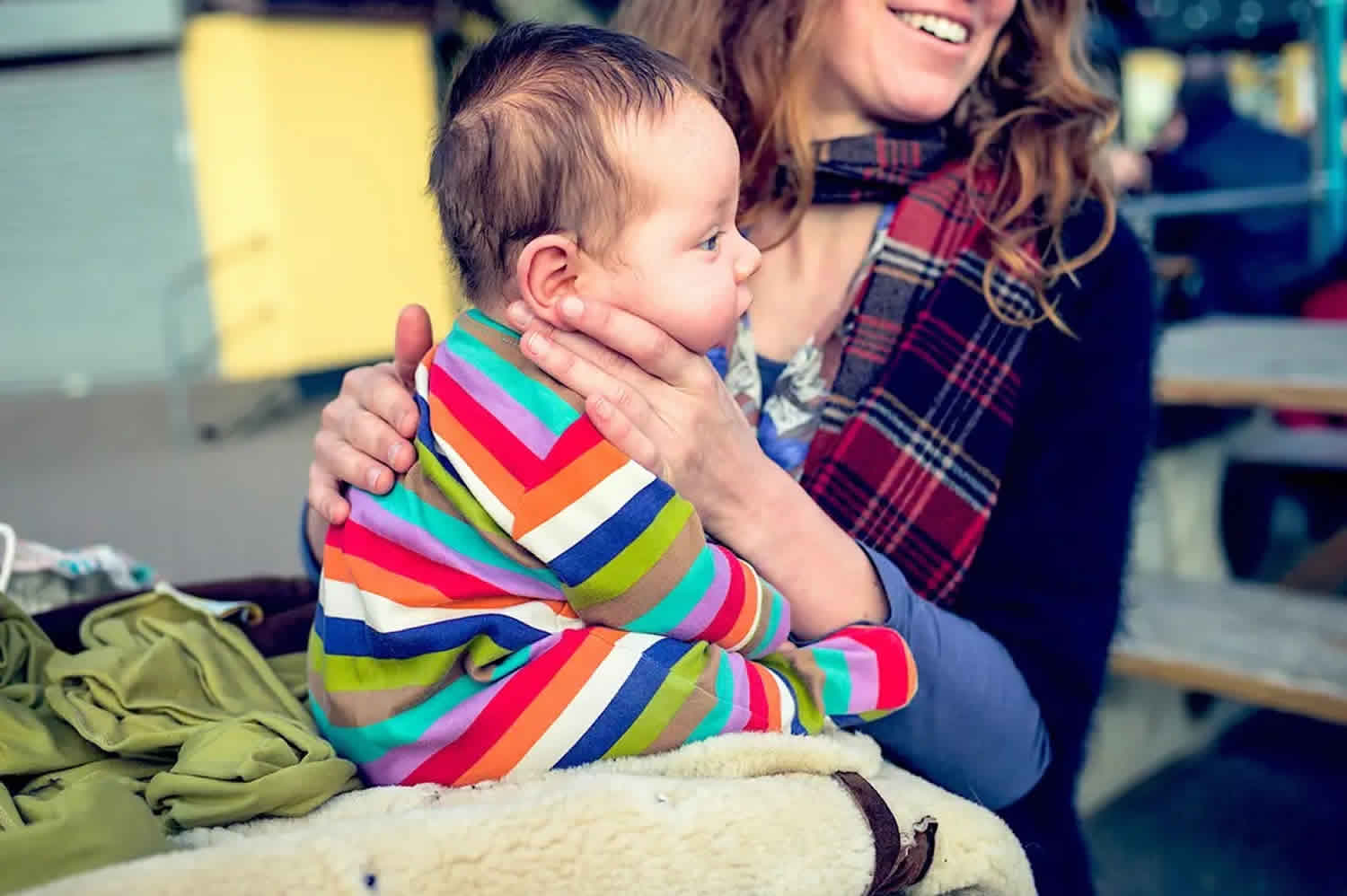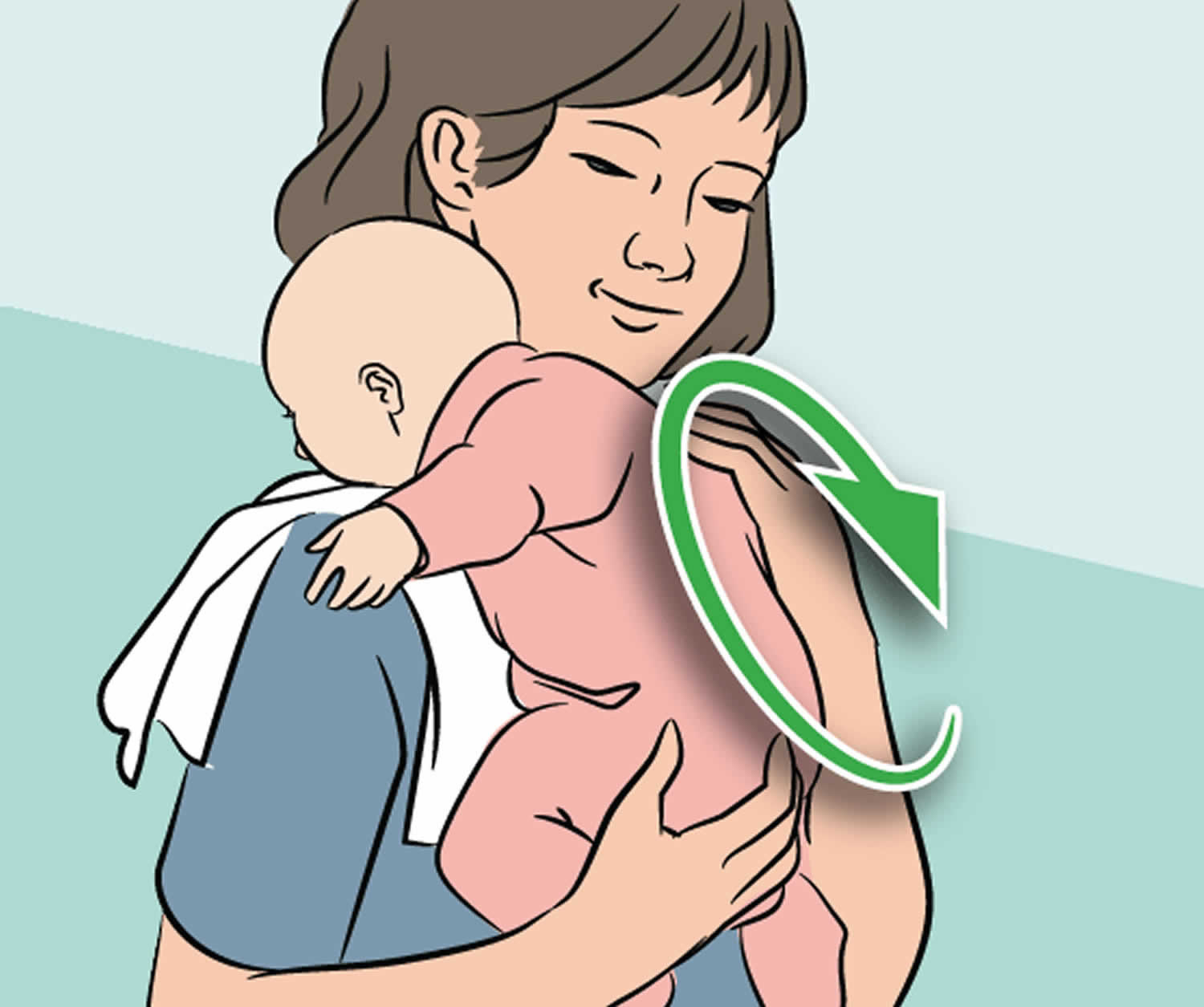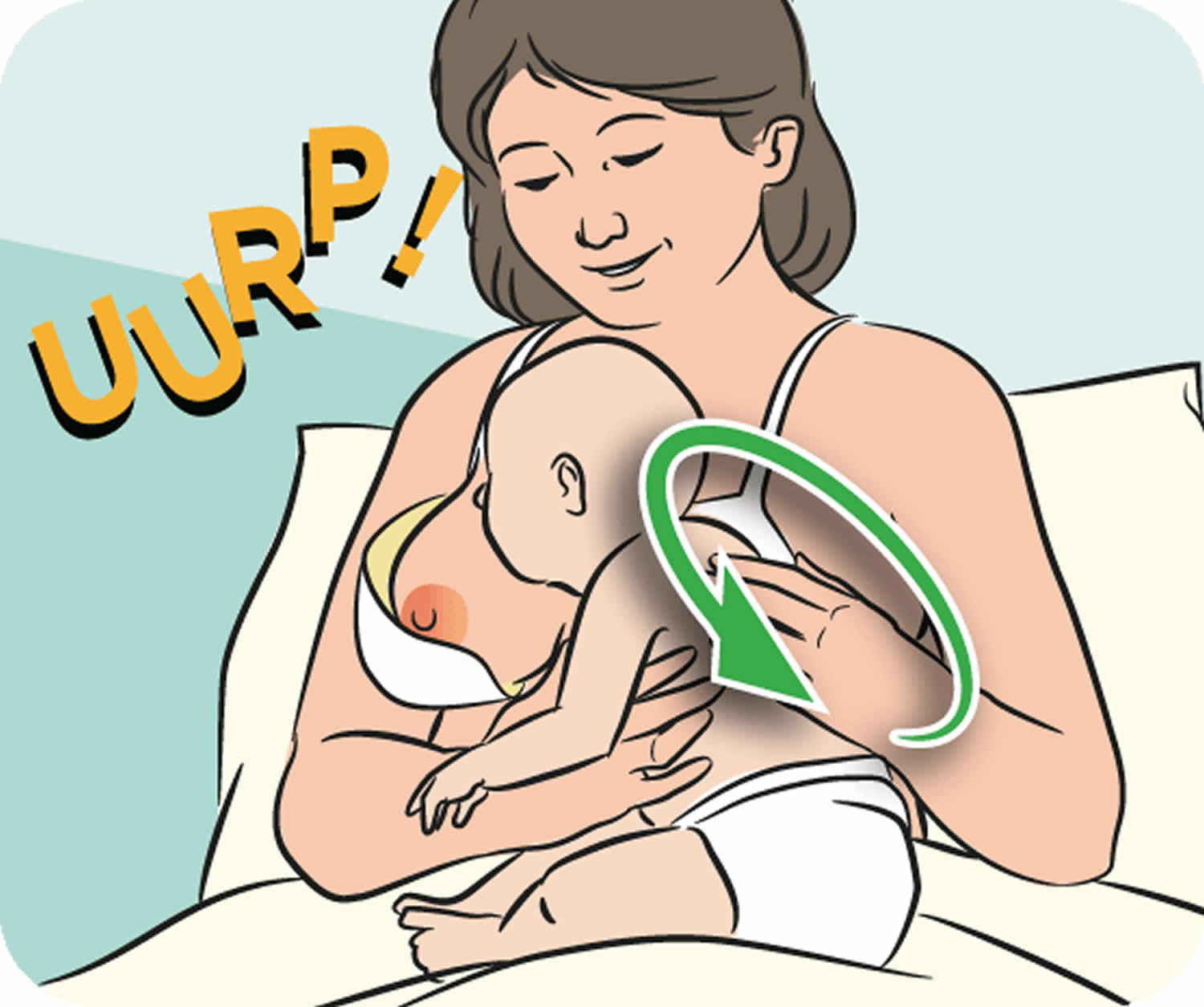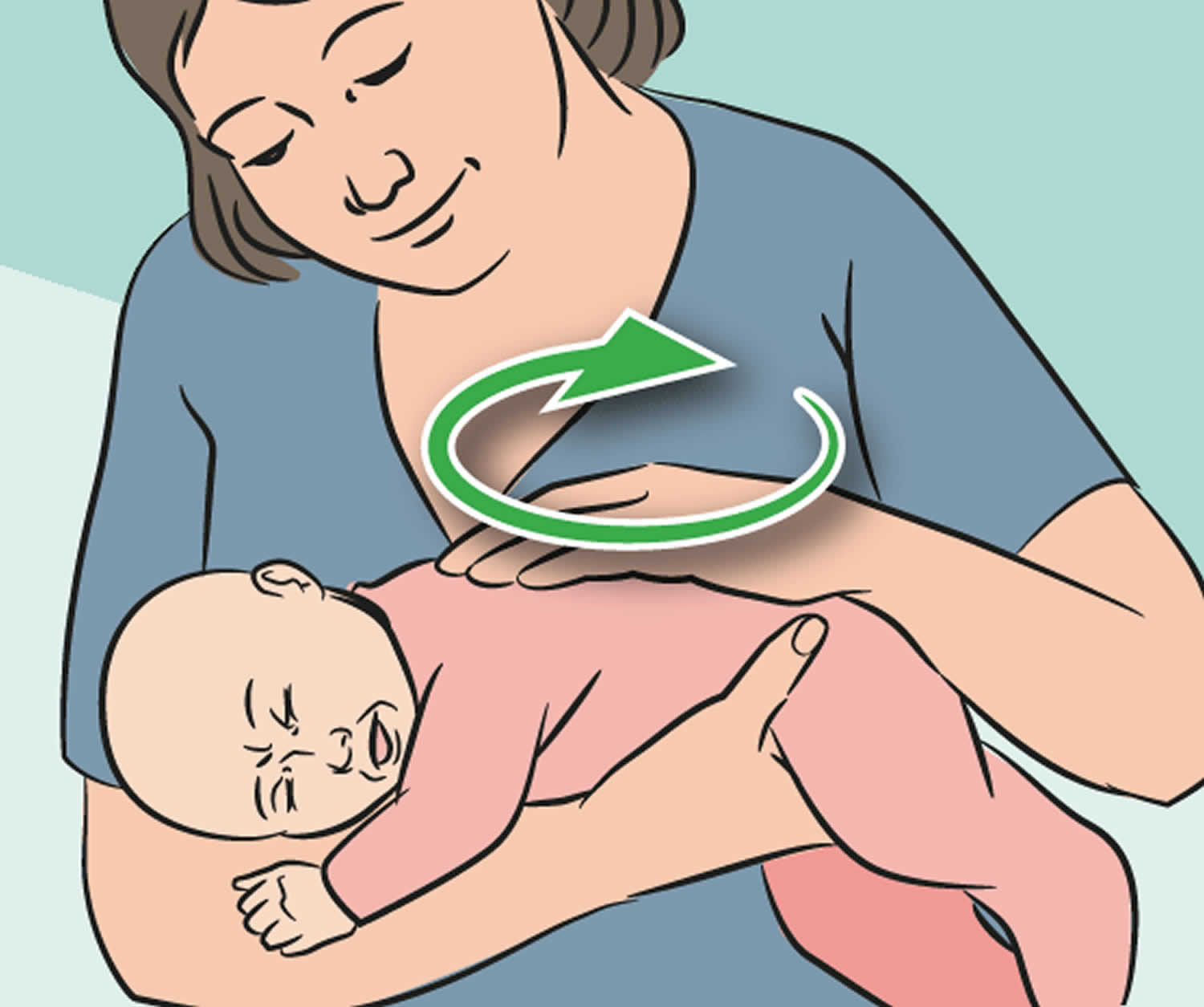How to burp a baby
Burping your baby also known as winding, is an important part of feeding. Newborns might have wind if they swallow air when crying or feeding. When your baby swallows, air bubbles can become trapped in their tummy and cause a lot of discomfort. Some babies find it easy to burp, while others need a helping hand. Some babies might be unsettled during and after a feed until they’ve been burped. Burping your baby part way through a feed might help. Use the position that works best for your baby.
There are no rules on when you should burp your baby, some babies need burping during their feed, some after. Look for clues – if your baby seems uncomfortable while feeding, have a little burping break. If they seem fine while feeding, wait until they’ve finished. Your baby will let you know.
To burp a baby support your baby’s head and neck, make sure their tummy and back is nice and straight (not curled up), and repeated gentle patting on your baby’s back should do the trick. Cup your hand while patting — this is gentler on the baby than a flat palm. To prevent messy cleanups when your baby spits up or has a “wet burp,” you might want to place a towel or bib under your baby’s chin or on your shoulder.
You don’t need to spend ages burping your baby, a couple of minutes should be enough.
There are a few ways to burp your baby. Try them all out and see which works best or use a combination.
Try different positions for burping that are comfortable for you and your baby. Many parents use one of these three methods:
- Sit upright and hold your baby against your chest. Your baby’s chin should rest on your shoulder as you support the baby with one hand. With the other hand, gently pat your baby’s back. Sitting in a rocking chair and gently rocking with your baby while you do this may also help.
- Hold your baby sitting up, in your lap or across your knee. Support your baby’s chest and head with one hand by cradling your baby’s chin in the palm of your hand. Rest the heel of your hand on your baby’s chest, but be careful to grip your baby’s chin, not the throat. Use the other hand to pat your baby’s back.
- Lay your baby on your lap on his or her belly. Support your baby’s head and make sure it’s higher than his or her chest. Gently pat your baby’s back.
If your baby seems fussy while feeding, stop the session, burp your baby, and then begin feeding again. Try burping your baby every 2 to 3 ounces (60 to 90 milliliters) if you bottle-feed and each time you switch breasts if you breastfeed.
Try burping your baby every ounce during bottle-feeding or every 5 minutes during breastfeeding if your baby:
- tends to be gassy
- spits a lot
- has gastroesophageal reflux disease (GERD)
- seems fussy during feeding
If your baby doesn’t burp after a few minutes, change the baby’s position and try burping for another few minutes before feeding again. Always burp your baby when feeding time is over.
To help prevent the milk from coming back up, keep your baby upright after feeding for 10 to 15 minutes, or longer if your baby spits up or has GERD. But don’t worry if your baby spits sometimes. It’s probably more unpleasant for you than it is for your baby.
Sometimes your baby may awaken because of gas. Picking your little one up to burp might put him or her back to sleep. As your baby gets older, don’t worry if your child doesn’t burp during or after every feeding. Usually, it means that your baby has learned to eat without swallowing excess air.
Babies with colic (3 or more hours a day of continued crying) might have gas from swallowing too much air during crying spells, which can make the baby even more uncomfortable. Using anti-gas drops has not proven to be an effective way to treat colic or gas, and some of these medicines can be dangerous.
If your newborn is often unsettled after feeding and burping, or you’re worried for any other reason, see your doctor.
How long to burp a baby?
You don’t need to spend ages burping your baby, a couple of minutes should be enough.
Over your shoulder
Put a cloth over your shoulder. Put baby over your shoulder and support baby with your hand on the same side. With your baby’s chin resting on your shoulder, support the head and shoulder area with one hand, and gently rub and pat your baby’s back. It might help to walk around as you are doing this.
Your baby might vomit up some milk during burping. This is normal.
After burping, your baby will give you baby cues about what to do next. If baby is comfortable, it might be time for play and activities with you.
If your baby is still upset after being burped, the problem might be something other than wind. Is your baby still hungry? Does baby have a dirty nappy? Is baby unwell?
Figure 1. Over your shoulder to burp a baby
Sitting on your lap
Sit your baby upright on your lap facing away from you. Place the palm of your hand flat against their chest and support their chin and jaw (don’t put any pressure on the throat area). Lean your baby forwards slightly with baby’s tummy against your hand and with your free hand, gently rub or pat your baby’s back. The pressure of your hand on baby’s tummy might bring up wind.
Your baby may bring some milk up while burping, so have a burp cloth or muslin square ready (this is perfectly normal and nothing to worry about).
After burping, your baby will give you baby cues about what to do next. If baby is comfortable, it might be time for play and activities with you.
If your baby is still upset after being burped, the problem might be something other than wind. Is your baby still hungry? Does baby have a dirty nappy? Is baby unwell?
Figure 2. Sitting on your lap to burp a baby
Lying across your lap
Lie your baby across your lap or your forearm face down so baby is looking sideways and is supported by your knee or hand. Supporting their chin (don’t put any pressure on the throat area), use your free hand to gently rub or pat your baby’s back with your other hand.
Your baby may bring some milk up while burping, so have a burp cloth or muslin square ready (this is perfectly normal and nothing to worry about).
After burping, your baby will give you baby cues about what to do next. If baby is comfortable, it might be time for play and activities with you.
If your baby is still upset after being burped, the problem might be something other than wind. Is your baby still hungry? Does baby have a dirty nappy? Is baby unwell?
Figure 3. Lying across your lap to burp a baby
What if my baby won’t burp?
If these methods don’t work and your baby shows signs of trapped wind (crying, arched back, drawing legs into tummy, clenched fists), try lying them on their back and gently massaging their tummy. Also move your baby’s legs back and forth – like they’re riding a bicycle. If this doesn’t work, talk to your health care provider, they’ll be able to advise you on the best thing to do.
Recognizing baby cues
Your baby’s body language can tell you how he or she is feeling and what he or she needs from you. All babies give cues to how they’re feeling and what they need from you. But each baby develops her own mix of signs to tell you what she wants. Eventually you’ll get to know your baby’s individual cues and what they tell you about your baby’s feelings.
And as you and your baby get to know each other, you’ll figure out the best way to respond to your baby’s individual cues too. For example, your grizzling baby might look relaxed when you smile at him, or he might seem to like it better when you sing and talk to him. This helps you know how to respond the next time he grizzles.
Your baby’s body language gives you important cues about whether he or she is:
- tired
- hungry
- wide awake and ready to play
- needing a break.
When you notice your baby’s body language and respond to it, he feels safe and secure. This helps you to build a strong relationship with your baby. And a strong relationship with you and other main caregivers is vital to your baby’s development.
Baby cues that say ‘I’m hungry’
Newborns need to feed every 2-3 hours. When your baby is hungry, she might:
- make sucking noises
- turn towards the breast.
You can start to look for these cues every 1-2 hours in newborns or every 3-4 hours for an older baby. When you recognize hunger signs in your baby, it’s a good idea to offer him a feed. Looking for your baby’s hunger signs is a better way to work out when to feed than waiting for a set number of hours.
Watch the video to see what hunger cues look like in real babies.
Baby cues that say ‘I’m tired’
Tired signs in babies include:
- staring into the distance
- jerky movements
- yawning
- fussing
- sucking fingers
- losing interest in people or toys.
Watch the video to see what these cues look like in real babies.
Baby cues that say ‘I want to play’
Older babies usually follow a ‘feed-play-sleep’ routine.
Cues that your baby is ready to play with you include:
- eyes wide and bright
- eye contact with you
- smiles
- smooth movements
- hands reaching out to you.
When you recognize ‘ready to play’ signs in your baby, it’s a good time to smile and talk to your baby. Baby play is simple: the best toy for your baby is you, and the best baby game is playing with you.
Watch the video to see more signs that your baby is ready to play and to see these baby cues in action.
Baby cues that say ‘I need a break’
Babies who are four months and older might not always be ready for a nap after their play time. Sometimes they might want a change of pace or activity instead. So what do these baby cues look like?
If your baby wants a break from what she’s doing right now, she might:
- turn her head away from you
- squirm or kick.
When you recognize ‘ready for a break’ signs in your baby, it’s a good idea to give him some quiet time or a different activity. For example, if your baby turns his head away from the rattle you’re showing him, you could lie him on his back to look at his mobile for a while.
Watch the video to see more signs that your baby wants to change activity and to see these baby cues in action.








